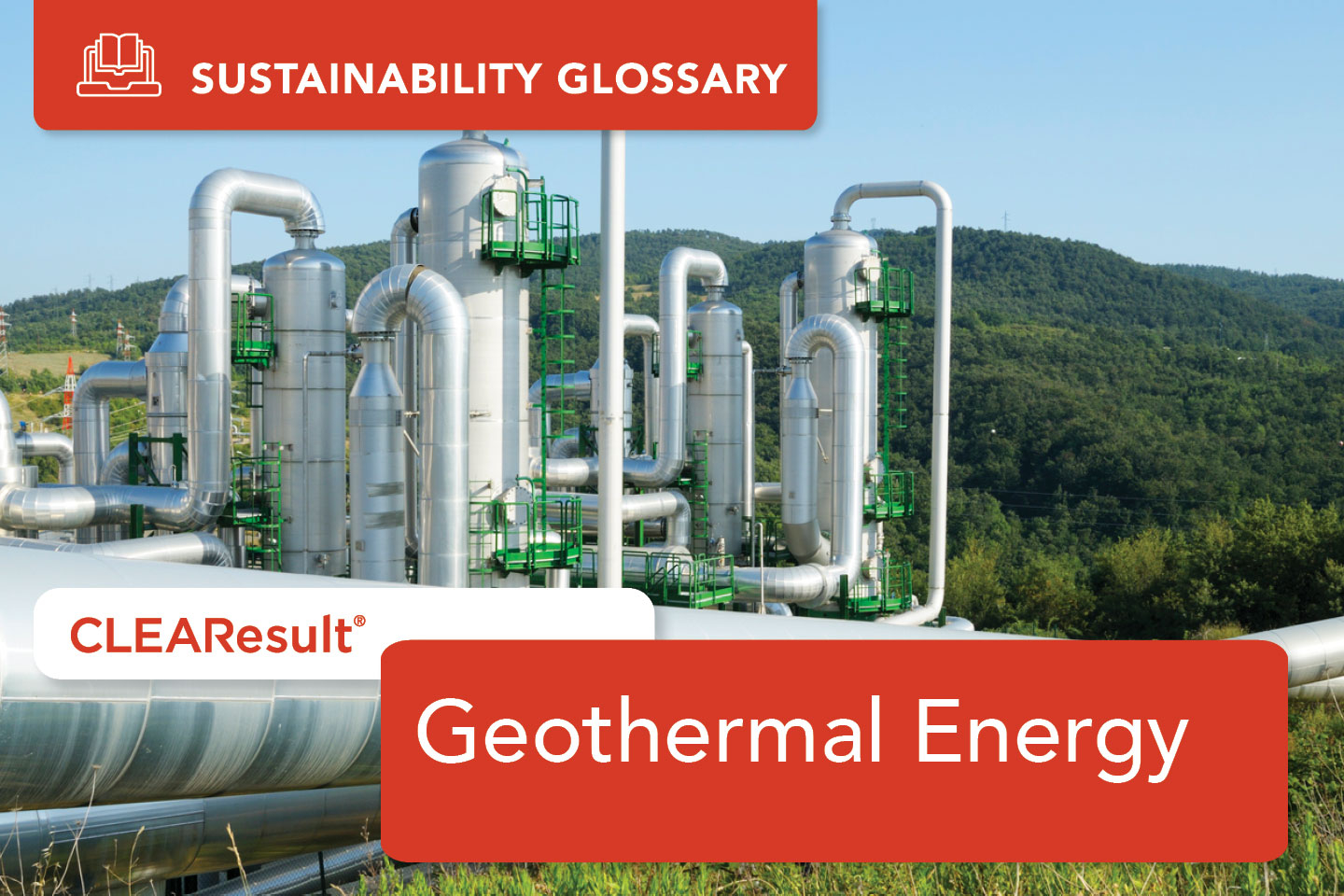Geothermal Energy

What is geothermal energy?
Geothermal energy is a renewable energy source that harnesses the heat stored beneath the Earth's surface for cooking, bathing, space heating, electrical power generation and more. The word "geothermal" comes from the Greek words "geo," meaning Earth, and "therme," meaning heat. (Source: DOE Office of Energy Efficiency & Renewable Energy)
Main ways geothermal energy is used:
Geothermal power plants: These plants use hot water or steam from the Earth's interior to turn turbines connected to generators, producing electricity. There are three main types of geothermal power plants (Source: Geothermal Technologies Office):
The most common is “flash steam,” which uses geothermal reservoirs of water over 360°F. This water flows up through wells in the ground under its own pressure, which then decreases, and the hot water boils into steam. This powers a turbine.
Dry steam draws from underground sources of steam (there are only two such sources in the U.S. – the Geysers in California and Old Faithful in Yellowstone National Park, WY.)
Finally, binary cycle power plants operate on water at lower temperatures of about 225–360°F. The heat from the hot water is used to boil a working fluid, that is vaporized in a heat exchanger and used to turn a turbine.
Direct use applications: Underground hot water can also be pumped from underground reservoirs and used directly for heating purposes (as opposed to being used to generate electricity) in homes, greenhouses and many industrial processes. Some cities pipe the hot water under roads and sidewalks to melt snow. (Source: Environmental and Energy Studies Institute)
Geothermal heat pumps (GHP): This technology uses the relatively constant ground temperature, which, like a cave, is warmer than the air above it during the winter and cooler than the air in the summer. GHPs use a heat pump, ductwork and a ground heat exchanger to take advantage of this stable temperature, heating buildings in the winter and cooling them in the summer. (Source: Geothermal Technologies Office)
The development of geothermal energy:
Civilizations have tapped into the Earth's internal heat for a variety of purposes for thousands of years. Here’s a quick timeline of advancements in geothermal energy since the 19th century:
In 1827, François de Larderel invented a way to separate boric acid (used at the time as an antiseptic) from volcanic mud by using steam from steam vents to heat cauldrons. This was possibly the first industrial use of geothermal energy. (Source: 'Geothermal Energy throughout the Ages', Government of Alberta)
In 1904, Italian scientist Piero Ginori Conti used geothermal energy to power a small generator capable of lighting several light bulbs. Following further experimentation, the first geothermal power plant was established in Larderello in 1913. This marked a significant step forward in the practical utilization of geothermal energy for generating electricity. (Source: 'Geothermal Energy throughout the Ages', Government of Alberta)
The U.S. began to explore geothermal energy for electricity generation in the 1950s. The first geothermal power plant complex focused on electricity generation, known as the Geysers, became operational in California in 1960. (Source: California State Lands Commission)
The oil crisis of the 1970s prompted increased interest in alternative energy sources, including geothermal. During this period, many countries such as the Philippines, Mexico and Japan expanded their geothermal projects. (Source: Thirtieth Workshop on Geothermal Reservoir Engineering Stanford University)
Today, ongoing advancements in drilling technology, reservoir management and enhanced geothermal systems (or EGS) are improving the efficiency and feasibility of projects around the world. (Source: Geothermal Technologies Office)
Why is geothermal energy important?
As the world seeks alternative energy sources, the popularity of geothermal energy has increased. First and foremost, it’s a reliable option that generates low greenhouse gas emissions. Using geothermal for electricity generation produces only about one-sixth of the carbon dioxide of a natural gas power plant, and little—if any—nitrous oxide or sulfur dioxide.
Additionally, geothermal power plants typically have long operational lifespans, which contributes to the stability and predictability of our energy infrastructure. Geothermal power plants also require less land area compared to other forms of renewable energy, thereby minimizing disruptions to local fora and fauna, and communities.
Lastly, geothermal energy has the potential to enhance energy security, reducing reliance on fossil fuels, as well as stimulate local economies by creating jobs that support industries related to drilling, infrastructure development and power plant operation. (Source: Geothermal Technologies Office)
CLEAResult’s impact on geothermal energy:
In 2023, we were selected to support Colorado’s Geothermal Energy Grant Program (CEGP), which provides $12 million for the installation of ground-source heat pumps within residential buildings, nonresidential buildings and geothermal electricity projects. The GEGP will play a vital role in the state’s goal to achieve 100% renewable energy by 2040, and net-zero greenhouse gas emissions by 2050.
What’s more, at least 25% of grant funding will be allocated to low-income applicants or projects. This program is expected to lead the way in geothermal energy and be a shining example for Western states. It’s an honor to be an integral part of this substantial investment in geothermal energy.
Colorado’s geothermal program will play a vital role in the state’s goal to achieve 100% renewable energy by 2040, and net-zero greenhouse gas emissions by 2050.